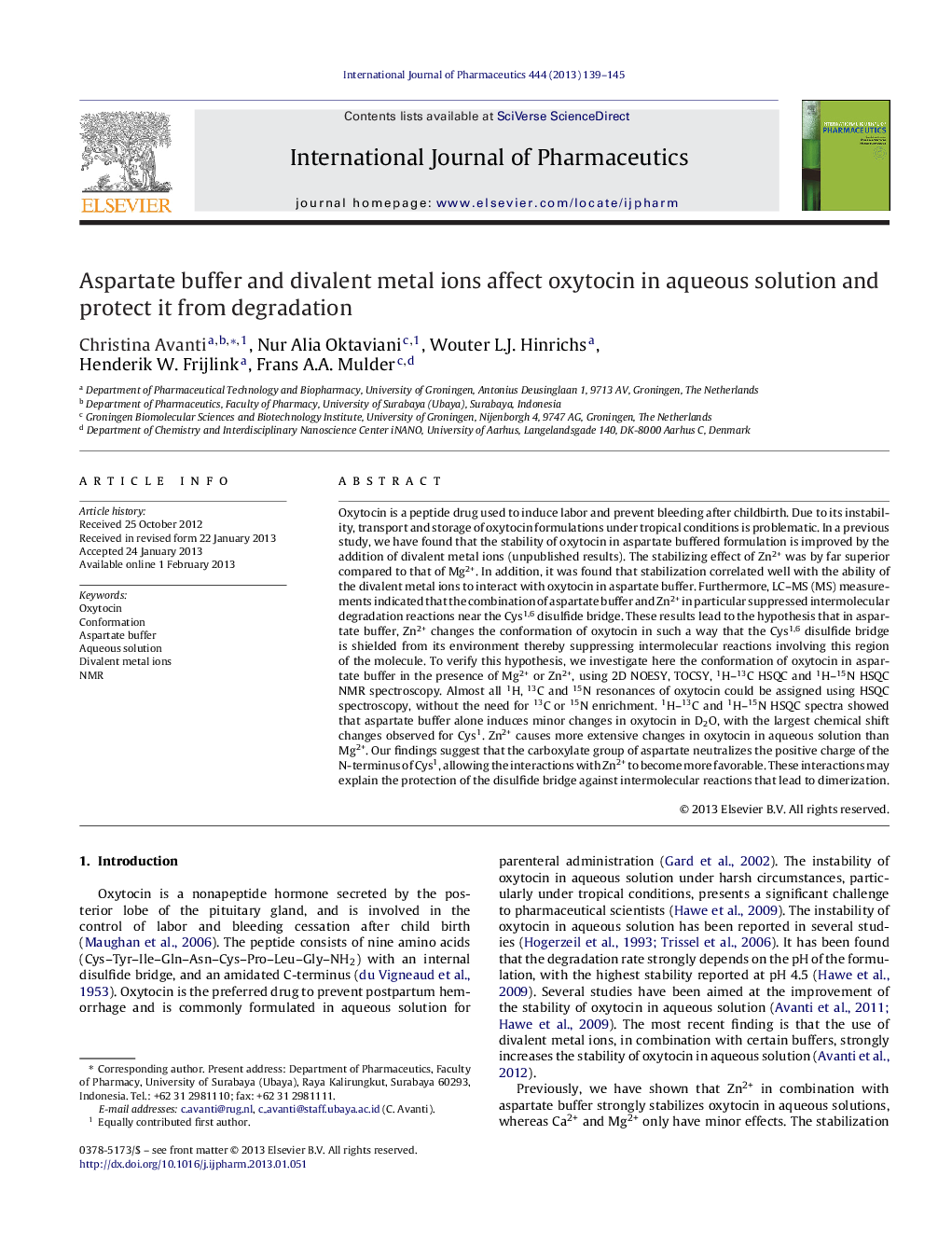| Article ID | Journal | Published Year | Pages | File Type |
|---|---|---|---|---|
| 2502500 | International Journal of Pharmaceutics | 2013 | 7 Pages |
Oxytocin is a peptide drug used to induce labor and prevent bleeding after childbirth. Due to its instability, transport and storage of oxytocin formulations under tropical conditions is problematic. In a previous study, we have found that the stability of oxytocin in aspartate buffered formulation is improved by the addition of divalent metal ions (unpublished results). The stabilizing effect of Zn2+ was by far superior compared to that of Mg2+. In addition, it was found that stabilization correlated well with the ability of the divalent metal ions to interact with oxytocin in aspartate buffer. Furthermore, LC–MS (MS) measurements indicated that the combination of aspartate buffer and Zn2+ in particular suppressed intermolecular degradation reactions near the Cys1,6 disulfide bridge. These results lead to the hypothesis that in aspartate buffer, Zn2+ changes the conformation of oxytocin in such a way that the Cys1,6 disulfide bridge is shielded from its environment thereby suppressing intermolecular reactions involving this region of the molecule. To verify this hypothesis, we investigate here the conformation of oxytocin in aspartate buffer in the presence of Mg2+ or Zn2+, using 2D NOESY, TOCSY, 1H–13C HSQC and 1H–15N HSQC NMR spectroscopy. Almost all 1H, 13C and 15N resonances of oxytocin could be assigned using HSQC spectroscopy, without the need for 13C or 15N enrichment. 1H–13C and 1H–15N HSQC spectra showed that aspartate buffer alone induces minor changes in oxytocin in D2O, with the largest chemical shift changes observed for Cys1. Zn2+ causes more extensive changes in oxytocin in aqueous solution than Mg2+. Our findings suggest that the carboxylate group of aspartate neutralizes the positive charge of the N-terminus of Cys1, allowing the interactions with Zn2+ to become more favorable. These interactions may explain the protection of the disulfide bridge against intermolecular reactions that lead to dimerization.
Graphical abstractFigure optionsDownload full-size imageDownload high-quality image (142 K)Download as PowerPoint slide
